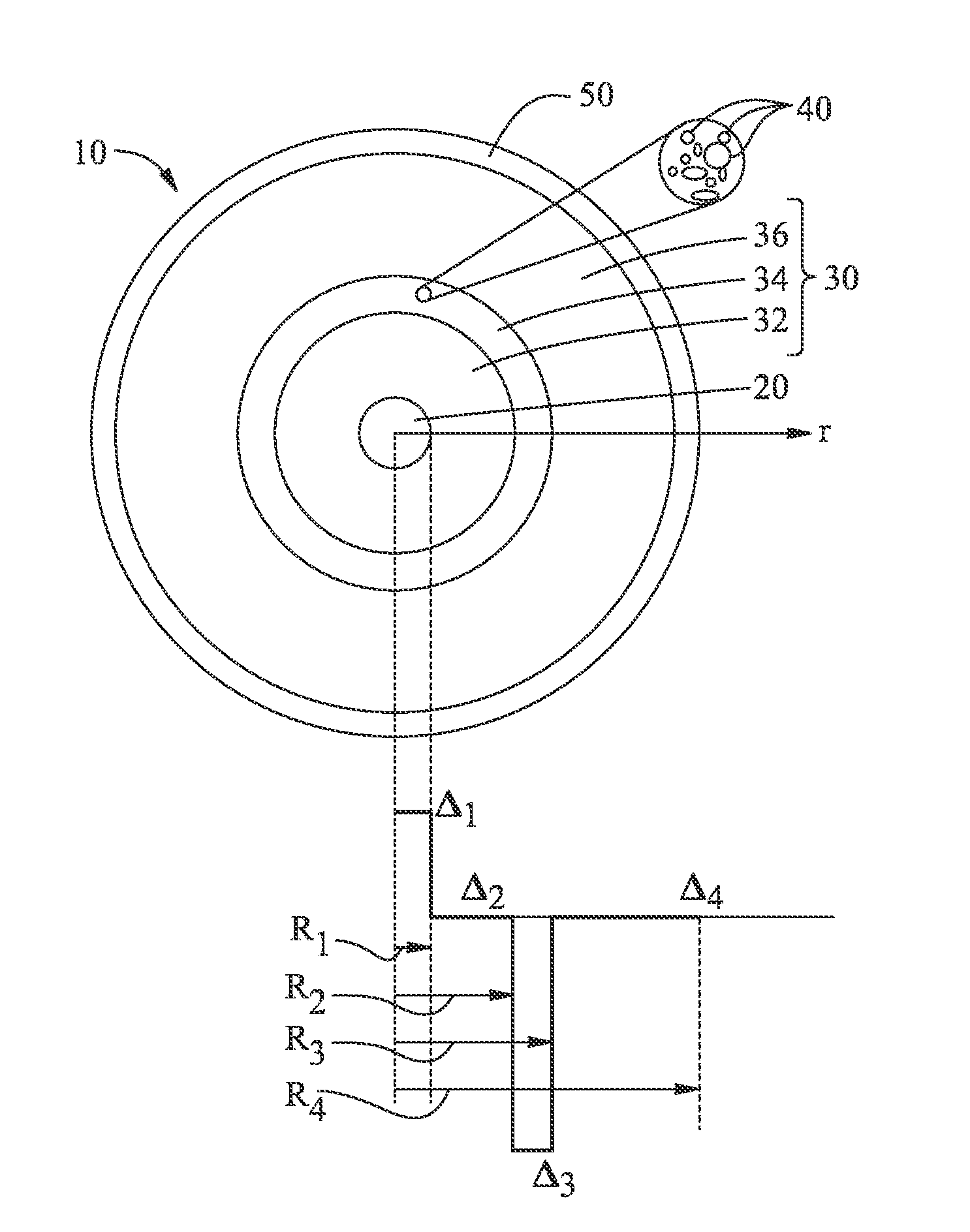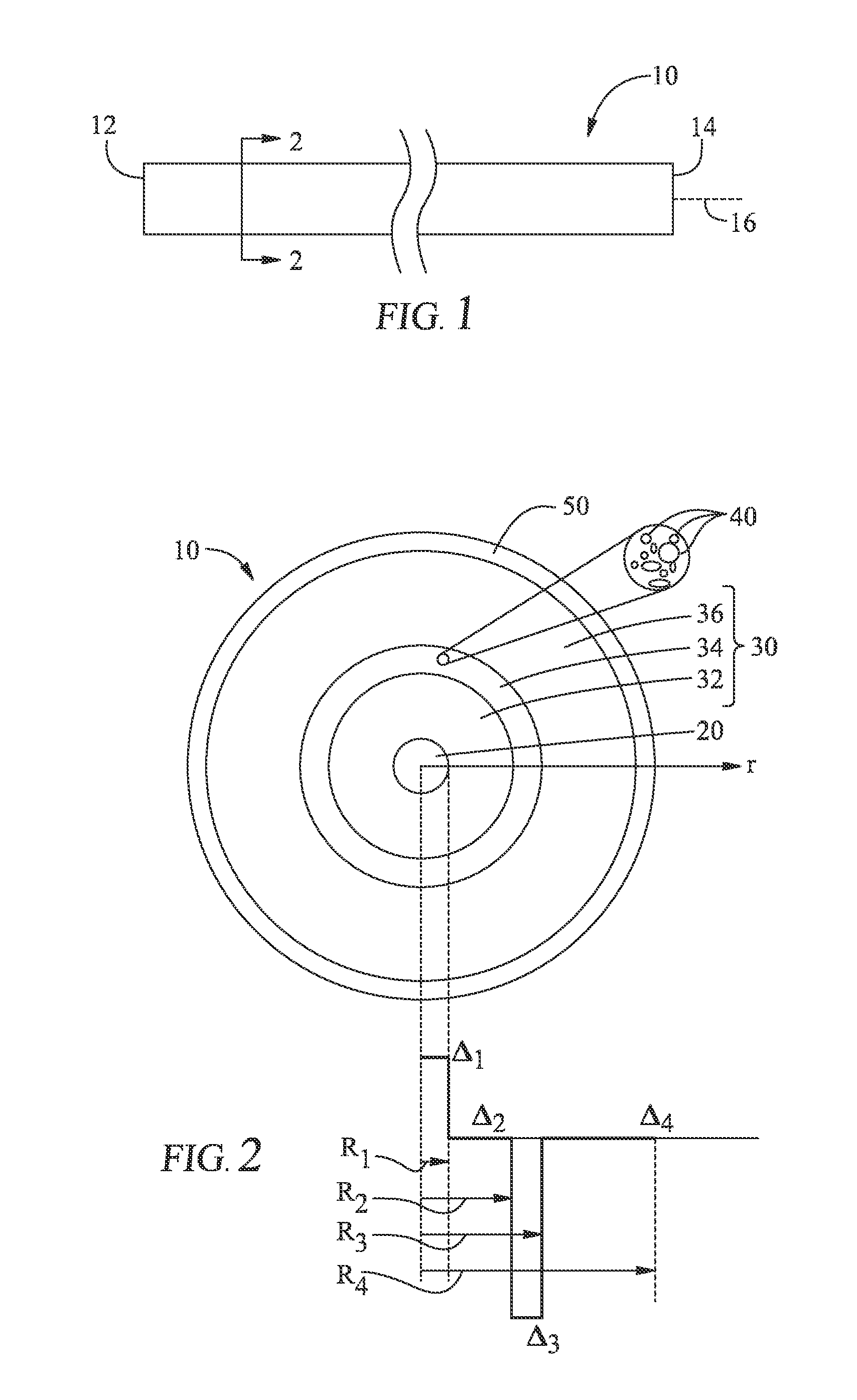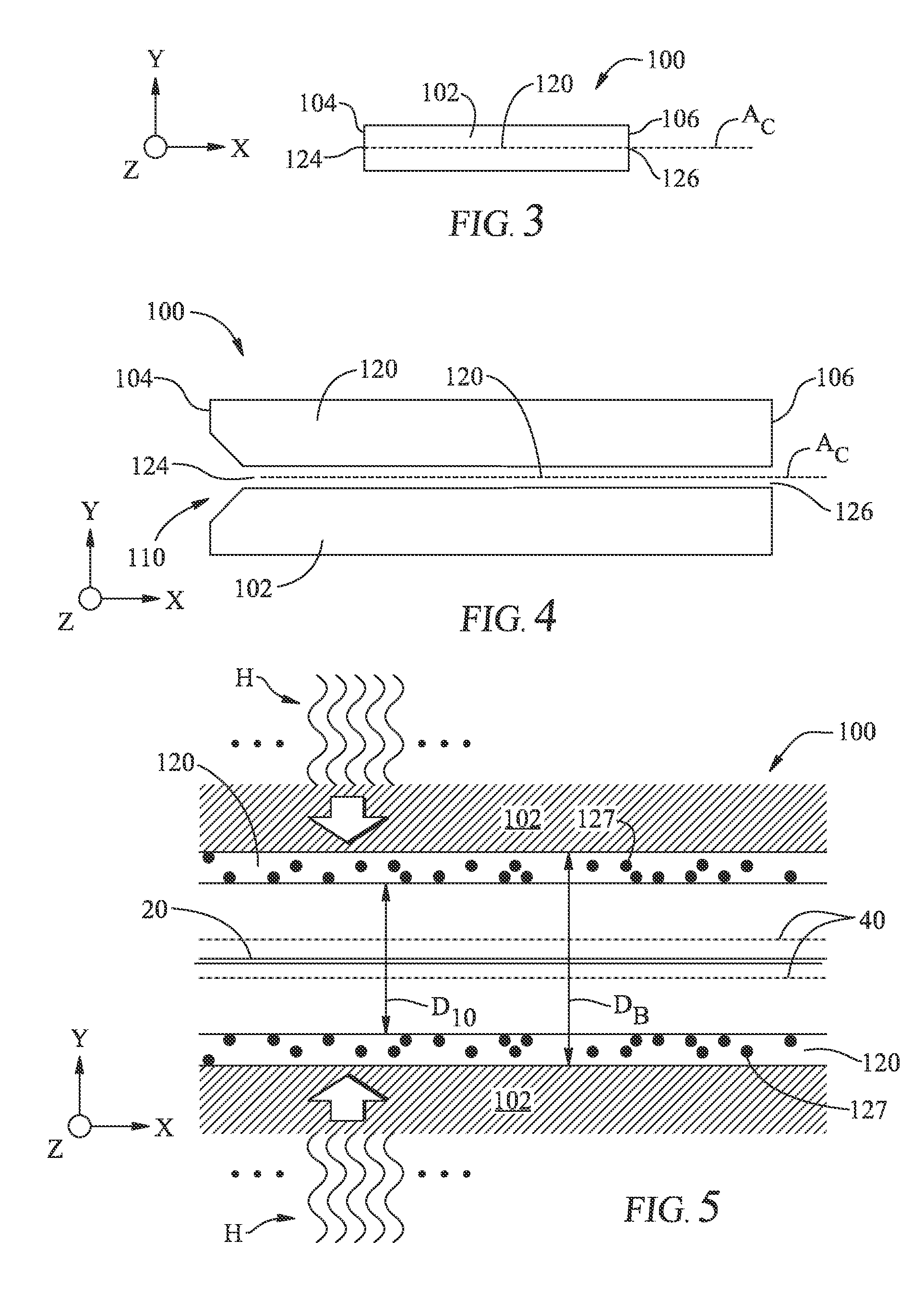Methods for centering optical fibers inside a connector ferrule and optical fiber connector
a technology of optical fiber and connector ferrule, which is applied in the direction of optics, instruments, optical light guides, etc., can solve the problems of significant amounts of optical fiber not fitting into the bore, the difficulty of achieving such exact alignment, and the difficulty of centering one or more optical fibers in a single-fiber or multi-fiber connector ferrul
- Summary
- Abstract
- Description
- Claims
- Application Information
AI Technical Summary
Problems solved by technology
Method used
Image
Examples
Embodiment Construction
[0044]Reference is now made to preferred embodiments of the invention, examples of which are illustrated in the accompanying drawings. Whenever possible, the same or similar reference numbers and symbols are used throughout the drawings to refer to the same or similar parts.
[0045]In the description below, the term “void-free” in connection with an optical fiber means that there are no voids visible when the fiber end face is viewed at a magnification of 400× using an optical microscope. The smallest feature that is visible at such magnification is about 0.4 μm in diameter, so that any voids smaller than this size may be present, but would not be considered sufficiently large to be of significance in relation to the performance of the fiber. The term “substantially void free” means that there may be present voids having diameter of 0.4 μm or greater, but the number of voids (i.e., the air-fill percent) is so reduced as compared to that prior to thermally processing the fiber that the...
PUM
 Login to View More
Login to View More Abstract
Description
Claims
Application Information
 Login to View More
Login to View More - R&D
- Intellectual Property
- Life Sciences
- Materials
- Tech Scout
- Unparalleled Data Quality
- Higher Quality Content
- 60% Fewer Hallucinations
Browse by: Latest US Patents, China's latest patents, Technical Efficacy Thesaurus, Application Domain, Technology Topic, Popular Technical Reports.
© 2025 PatSnap. All rights reserved.Legal|Privacy policy|Modern Slavery Act Transparency Statement|Sitemap|About US| Contact US: help@patsnap.com



